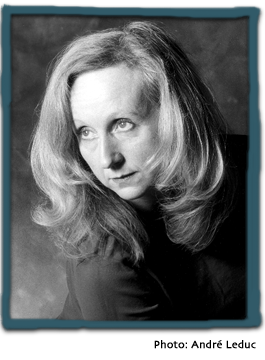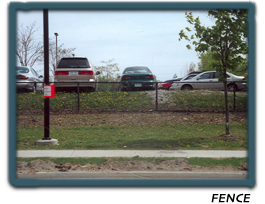 Space, Place and Inter-cultural Choreography
Space, Place and Inter-cultural Choreography
Carol Anderson: Welcome to the first event of Choreographic Dialogues! It is my pleasure to introduce the series' first presenter, York faculty member Susan Cash. An alumna of the professional program of the School of Toronto Dance Theatre as well as York's Dance Department, she is a dancer and choreographer who has been performing and presenting her own work for more than two decades on the alternative theatre circuit and in formal performance venues across Canada and the USA. She has been artist-in-residence at the University of Waterloo, where she received a Distinguished Teacher Award. A Certified Movement Analyst, she taught in the first Toronto Laban certification program, hosted by York University in 2002-2004, and has applied her skills in this area at several medical clinics in Ontario. (The first Canadian Certification Program in Laban Movement Analysis took place at University of Quebec in Montreal in 1994-95. It was directed by Peter Madden. Valerie Dean, who provided this note, was a member of the faculty team.)
Professor Cash teaches composition, repertoire, modern technique and improvisation in the undergraduate program, and Laban Movement Analysis in the MA, MFA and Ph.D programs at York. Since 2003, she has served as artistic and managing director of the York Dance Ensemble, a repertory company of advanced dancers in the Department of Dance.
Thank you for starting off the series, Susan.
Susan Cash: It is not often that we are asked as choreographers to discuss our work in this kind of a forum, so I thank you Carol for seeing the need and benefit of doing so. It is not easy to speak of one's work, to make sense of it as one does it, or to know the meaning of it as it tumbles out. However, today I am going to try to talk with you about areas of my work as a choreographer that are of growing significance to me.
If I could use only one word to illustrate what I am interested in examining through choreography it would be “space”. How movement in space can change the perspective of space is what inspires my “moving-site performance” work and my cultural choreographic processes too. These two areas of my work are linked and resonate with the idea that movement in space creates place.
“Moving-site performance”, as opposed to “site-specific work”, is a phrase I have coined to describe a certain kind of work I am involved with. It is not about a physical site as an entity. It is not about the importance of a site. I am more interested in moving to bring sight (as in seeing) to a site. It is not about site as a fixed place where there is the intersection of movement that acts upon the site, but rather it is about bringing the presence of dance to a site that then collaborates to create a fluid identity of place. I am interested in highlighting the element of space through movement to enhance the power of place.
It is fascinating to me how space can transform movement and how movement can transform space. Rudolf Laban, in The Language of Movement, said, “Space is a hidden feature of movement and movement is a visible aspect of space.” Carol-Lynne Moore and Kaoru Yamamoto, in Beyond Words, say, “… whether the body moves or stays, it occupies space and is surrounded by it” (Moore and Yamamoto, 2005: p. 193).
It is intriguing to consider how space can be charged and changed by movement.
Cecily Dell, in an interview for the journal Movement News, comments on space and its ability to shift awareness. She says, “If you change the person's visual world, you change a person's posture, approach to space, and way of moving. When visual perception changes, then everything changes in your body – how you feel in space, how you approach space.” She speaks from her perspective as the mover, but for me, as a choreographer, I see this shift happen for the on-looker too, especially in viewing unconventional movement performed in an everyday setting.
Art is actually all around us. It is there if we choose to see it, from the paintings on walls to the sculptures in a landscape; from the architecture of our buildings to the graffiti on the sidewalk. Our perception makes art, by the relationship it creates between the elements that are all right before us. Marshall McLuhan, in the book The Essential McLuhan, is quoted as saying, “The user is always the content. You are the content of any extension of yourself, whether it be pin, pen, pencil, or sword, be it palace, or page, song or dance or speech” (McLuhan and Zingrone, 1996: pp. 280-281).
I sense that dance, because of the nature of its instrument – the body, is often absent from the aesthetic landscape of Canadian everyday life. It is one thing to see and hear musicians in the subway, and another matter to see live dancing as a regular occurrence in a public place.
Laban explored the transformation of people through movement in space. In my moving-site performance work I am interested in transforming space through movement. Just as Laban has spoken about the power of freeing movement from within, I am looking at how the power of space can be freed through movement. In particular, I am interested in how perspective can be changed by movement in an unusual space or manner.
We are used to seeing art objects and paintings in public space. What would happen if movement were more a part of our everyday landscape? Relationships of an environmental, psychological, spiritual, cultural, social and political nature are intrinsic to this interconnection of place, site and movement. Issues of identity, indigeneity, gender and ethnicity are all factors that come into play for me as well. My work converges to express the cosmological potential of dance to animate space and invigorate a relationship with the natural world.
 In the last four years I have created two moving-site performance works, one called Garden, and the other, Fence. For those works my idea was to move along any mundane roadside on the York campus. My sense was that the mere presence of people in an intentional collective gathering, let alone moving in synergy with one another, would elicit a change in on-lookers' habits, beliefs and perspectives of that location.
In the last four years I have created two moving-site performance works, one called Garden, and the other, Fence. For those works my idea was to move along any mundane roadside on the York campus. My sense was that the mere presence of people in an intentional collective gathering, let alone moving in synergy with one another, would elicit a change in on-lookers' habits, beliefs and perspectives of that location.
Even when we rehearsed the work I observed drivers slowing down and people looking. People changed their minds about what to do next. Some stayed a little longer instead of dashing off wherever they were going. Some clapped as if it were a performance. Some gathered in clumps to watch. Some stared or nodded. They would say to me, “What is it?” or “Wow, mesmerizing.” A little boy came up to one of my dancers during one work when the dancers were in still shapes, and asked, “What are you guys doing?” The dancer whispered, “We're doing a dance.” The little boy said, “Then why are you frozen?” The dancer said, “Because it's a freeze dance.” This kind of participatory response and spontaneity is rare in most dance performances.
Loosely based on Laban's “dimensional scale” or “defense scale” as it is sometimes called, I sculpted Fence on a corridor of grass beside a road on campus. Garden was done on a scrap patch of land outside a residence, between a toddler playground and garbage area. While Fence was involved with line and direction, with a purely spatial feel to it, Garden incorporated shape and shaping, and had a freer structure in terms of collective moving.
Fence seemed loaded for me, with questions and meaning. Taking place in front of a fence, the human link somehow increased the intensity of the environment. Essentially, the environment holds or contains people within it. The actual fence encloses a parking lot and creates a barrier for people to pass through. The movers in Fence delineated that sense of structure but layered other elements of purpose and meaning. I was not intending to present a specific message, but it allowed for analysis and interpretation if one wanted to pursue it.
Garden had a whimsical, quirky feeling that had potential for more bold development of all the elements involved: from the choreography to the costuming. But one aspect of this work was clear: the life of that scrap of land was invigorated in an instant. By the dancers' lovingly dancing Garden on that scrap, that little piece of campus was enabled to light up and be noticed in a new way. It was a form of reverence, with humour and respect for all the earth we walk upon or chance to pass.
The challenge in this kind of art-making is to make space a place. Too often we rely on seeing with only our eyes. This kind of seeing is given priority. However, the sensory involvement of seeing uses all faculties to observe, calculate, document and interpret – not only our eyes. (Next Page)
FENCE and GARDEN

home l shop dcd l history l links l donations l the collection l services l shipping policy l CIDD l exhibitions l CDFTP
educational resources l visits & lectures l making archival donations l grassroots archiving strategy l personnel l RWB alumni

